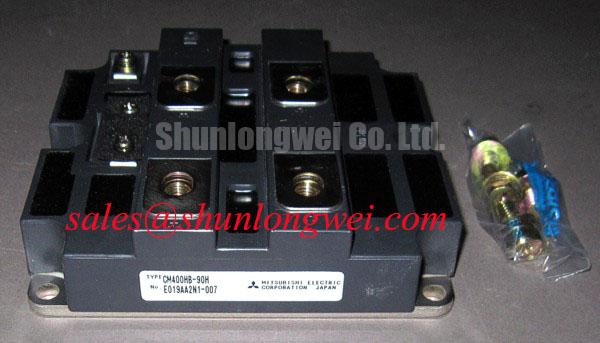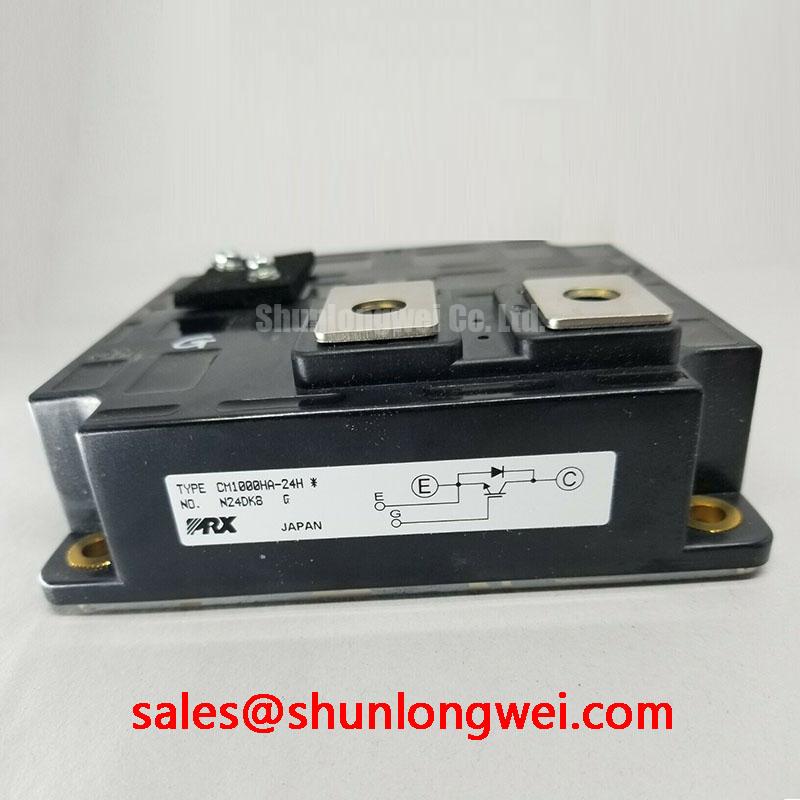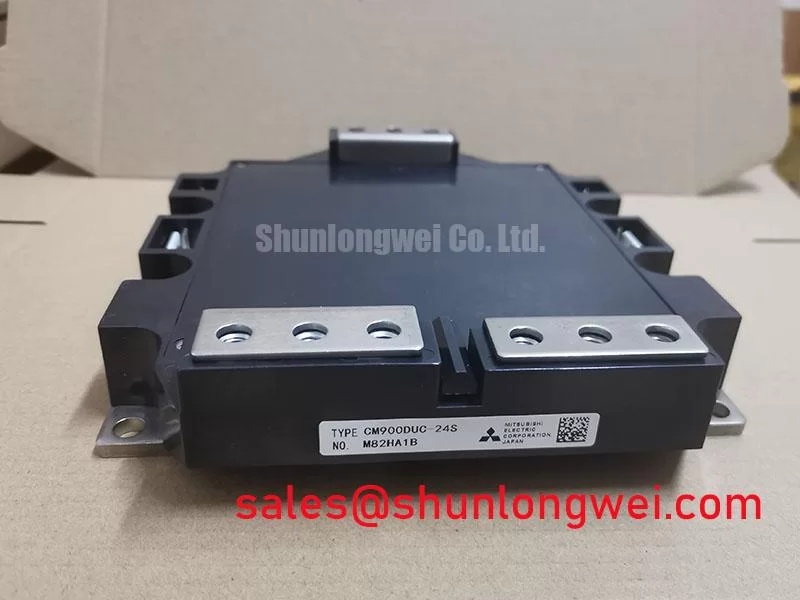Content last revised on November 21, 2025
CM150TX-24T: A Technical Analysis of the 1200V, 150A Dual IGBT Module
Product Overview
Engineered for High-Frequency Power Conversion
The Mitsubishi CM150TX-24T is a high-performance dual IGBT module designed to deliver exceptional efficiency and reliability in demanding power conversion systems. It provides a robust solution for engineers developing next-generation inverters and motor controls by combining a 1200V blocking voltage with a 150A continuous collector current capability. Its key strengths lie in its low conduction and switching losses, stemming from advanced chip technology. For applications demanding robust performance in the 10-50 kW range, the CM150TX-24T offers a foundation for compact and thermally stable designs. What is the primary benefit of its advanced chip technology? It achieves a low VCE(sat) without compromising switching speed, reducing overall system losses.
Key Parameter Overview
Decoding the Specs for Enhanced Switching Performance
The specifications of the CM150TX-24T are optimized for efficiency in switched-mode power applications. The low saturation voltage and fast switching characteristics are critical for minimizing wasted energy and enabling higher operational frequencies. Below is a summary of the key parameters that define its performance envelope.
| Parameter | Symbol | Value | Conditions |
|---|---|---|---|
| Collector-Emitter Voltage | VCES | 1200 V | VGE = 0V |
| Collector Current (DC) | IC | 150 A | TC = 80°C |
| Collector-Emitter Saturation Voltage | VCE(sat) (typ.) | 1.90 V | IC = 150A, VGE = 15V, Tj = 125°C |
| Maximum Junction Temperature | Tj(max) | 150 °C | - |
| Turn-on Switching Energy | Eon (typ.) | 19 mJ/pulse | IC = 150A, Tj = 125°C |
| Turn-off Switching Energy | Eoff (typ.) | 23 mJ/pulse | IC = 150A, Tj = 125°C |
| Thermal Resistance (Junction-to-Case) | Rth(j-c)Q | 0.11 °C/W | Per IGBT |
Download the CM150TX-24T datasheet for detailed specifications and performance curves.
Application Scenarios & Value
Achieving System-Level Benefits in Industrial Motor Drives
The CM150TX-24T is best suited for high-performance Variable Frequency Drive (VFD), servo drive, and general-purpose inverter applications where efficiency and reliability are paramount. With its dual IGBT configuration, it is an ideal building block for compact three-phase inverter bridges.
Consider a VFD controlling a 30kW industrial conveyor motor. During operation, the drive must precisely manage motor torque and speed, which involves high-frequency switching. The CM150TX-24T's low VCE(sat) of 1.90V directly reduces conduction losses—the energy lost as heat while the switch is on. This is like paying a lower 'toll' for current to pass through. Lower heat generation simplifies the thermal design, potentially allowing for a smaller heatsink and reducing the overall system footprint and bill of materials. This efficiency is critical for systems designed for continuous operation, where cumulative energy savings and enhanced component longevity are major design goals. For systems requiring higher current handling, the related CM200TXPA-24T offers an increased current rating within a similar technological framework.
Technical Deep Dive
A Closer Look at CSTBT™ for Superior Loss Performance
The performance of the CM150TX-24T is fundamentally enabled by Mitsubishi's CSTBT™ (Carrier Stored Trench-gate Bipolar Transistor) technology. This advanced chip structure is engineered to resolve a classic trade-off in IGBT design: the inverse relationship between conduction losses (VCE(sat)) and switching losses (Eoff).
In conventional IGBTs, lowering VCE(sat) often leads to a "tail current" during turn-off, increasing switching losses. The CSTBT™ design incorporates an additional n-layer that acts as a 'holding pen' for charge carriers near the collector. When the IGBT is turning off, this structure helps to sweep the carriers out more rapidly and efficiently. This minimizes the tail current, allowing for a fast, clean turn-off even with a low VCE(sat). This mechanism is analogous to a well-designed plumbing valve that shuts off water flow instantly without a prolonged 'dribble', preventing waste and enabling quicker cycling. The result for the CM150TX-24T is a favorable balance, offering low on-state voltage drop without the penalty of slow switching, a crucial advantage for modern PWM-based converters.
Industry Insights & Strategic Advantage
Meeting Efficiency Standards in Modern Power Electronics
The push for greater energy efficiency in industrial automation is codified in standards and regulations worldwide. The performance characteristics of the CM150TX-24T directly support engineers in meeting these stringent requirements, such as those related to IEC 61800-9 (formerly EN 50598-2) for eco-design in drive systems. By minimizing both conduction and switching losses, this module contributes to a higher overall system efficiency rating. This not only reduces the operational carbon footprint but also lowers the total cost of ownership (TCO) for the end-user through reduced electricity consumption. Incorporating highly efficient components like the CM150TX-24T is a strategic decision that future-proofs designs against rising energy costs and evolving environmental standards, ensuring compliance and a competitive edge in the market for industrial power solutions.
Frequently Asked Questions (FAQ)
What is the engineering significance of the typical VCE(sat) of 1.90V in the CM150TX-24T?
A VCE(sat) of 1.90V at its nominal current and operating temperature is a strong indicator of low conduction losses. For a design engineer, this directly translates to less heat generated by the module during operation. This reduces the demands on the cooling system, potentially allowing for a smaller, lighter, and less expensive heatsink, which in turn enables higher power density in the final product.
How does the dual (2-in-1) configuration of the CM150TX-24T benefit inverter design?
The dual, or half-bridge, configuration simplifies the layout of a three-phase inverter. By integrating two IGBTs in one package, designers can use three of these modules to create a full three-phase bridge. This reduces component count, simplifies the busbar structure, minimizes stray inductance, and streamlines the assembly process compared to using six discrete IGBTs.
What are the key thermal management considerations for this 150A module?
The primary consideration is ensuring the thermal resistance from the module's case to the ambient environment is low enough to keep the junction temperature (Tj) below its 150°C maximum. This involves selecting an appropriate heatsink based on the calculated power losses, using a high-quality thermal interface material (TIM) applied with the correct thickness and pressure, and ensuring adequate airflow. A detailed thermal analysis is crucial for long-term reliability.
Is a negative gate voltage recommended for the CM150TX-24T during turn-off?
Yes, datasheets for this class of IGBT typically recommend a small negative gate voltage (e.g., -5V to -15V) during the off-state. This provides a greater margin against noise-induced turn-on, especially in high dV/dt environments common in bridge topologies. It helps prevent catastrophic shoot-through failures by ensuring the IGBT remains firmly off when it is supposed to be.
Strategic Outlook for System Design
Integrating the CM150TX-24T into a power conversion system is a strategic choice for designs prioritizing a blend of high efficiency, thermal stability, and long-term operational reliability. Its proven CSTBT™ technology provides a dependable foundation for creating compact and robust power stages that are well-aligned with current and future demands for energy-conscious industrial applications.















